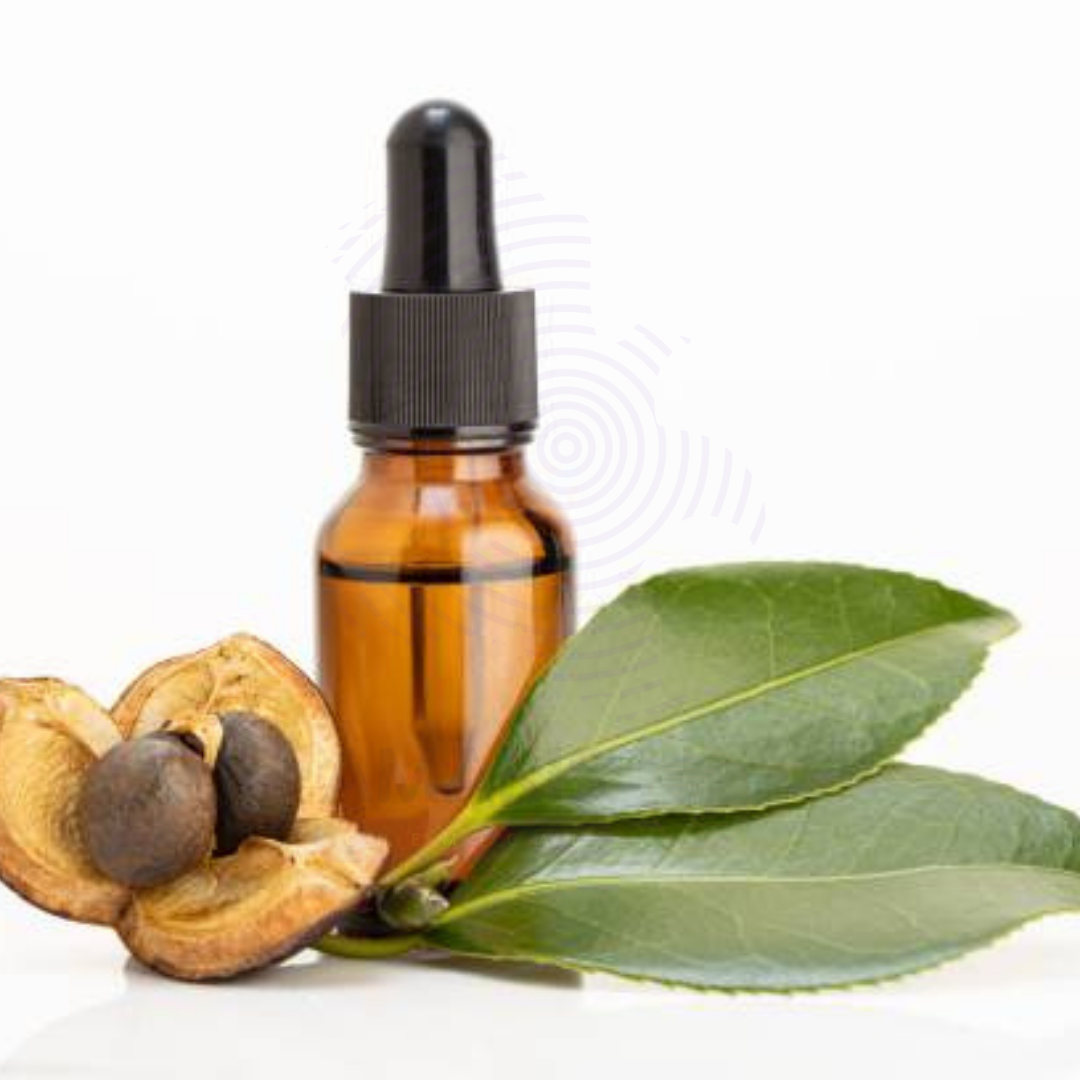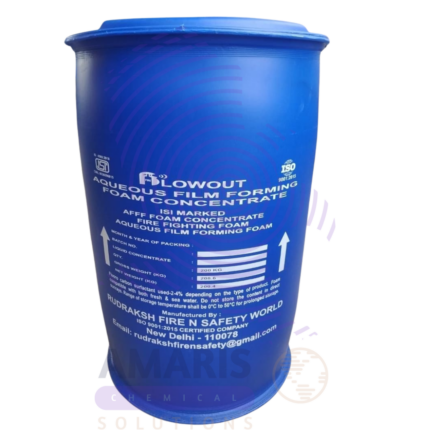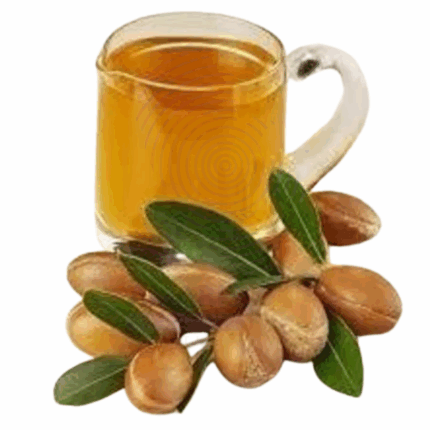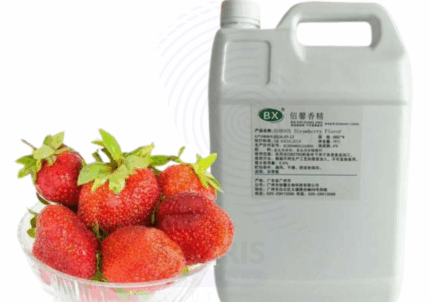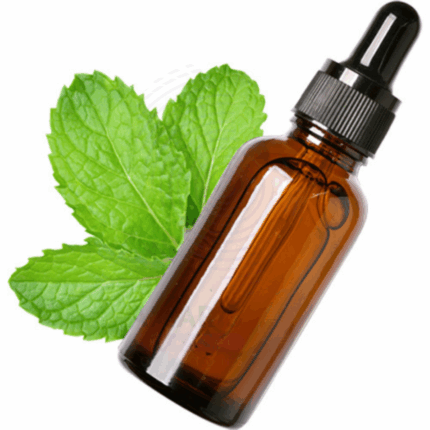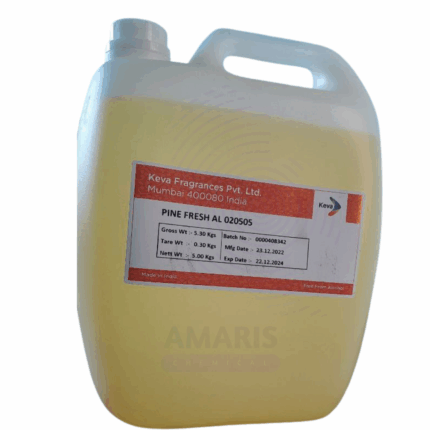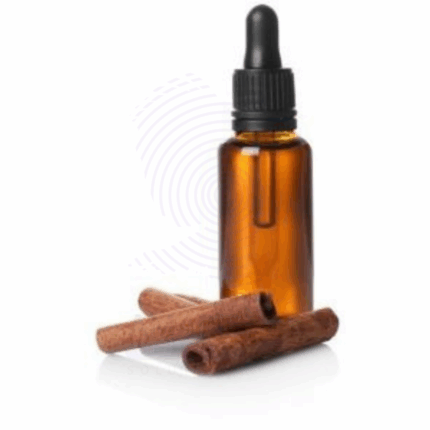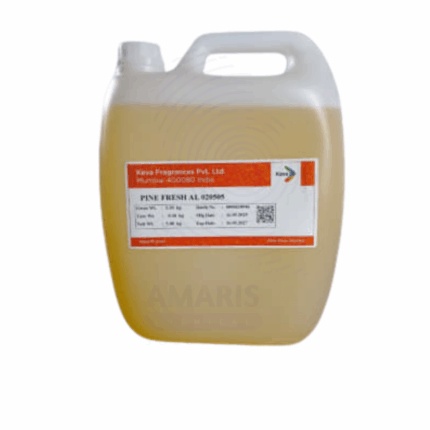

Sassafras Oil
Sassafras Oil is a potent essential oil distilled primarily from the bark of the Sassafras albidum tree, native to North America. Steam distillation yields a yellow to reddish-brown oil with a strong, sweet, root beer–like aroma due to its primary constituent, safrole. Historically used in perfumery, flavoring, and herbal medicine, Sassafras Oil possesses aromatic, antiseptic, and stimulant properties.
Despite its traditional applications, safrole-containing Sassafras Oil is strictly regulated in many countries due to potential hepatotoxicity and carcinogenicity associated with safrole. As such, modern uses are limited, and safrole-free versions are required for legal use in personal care or flavoring. In compliant forms, it finds niche use in natural fragrances, industrial solvents, and botanical extracts.
Sassafras Oil
Primary Uses
- Aromatherapy & Wellness
- Traditionally used in herbal remedies to stimulate circulation and ease rheumatic discomfort.
- Applied in limited, highly controlled aromatherapy practices for its mood-elevating and energizing scent.
- Used in vapor blends historically to promote respiratory comfort (now discouraged due to safety concerns).
- Cosmetics and Personal Care
- Historically used in soaps, perfumes, and aftershaves for its spicy-sweet, earthy fragrance.
- Occasionally included in vintage-style colognes and masculine scent blends (with safrole removed).
- Applied in traditional skin tonics and liniments (now rarely used due to safety regulation).
- Topical Applications
- Used in old herbal salves and poultices for sore muscles and joint pain relief.
- Incorporated in traditional bug repellent blends due to its pungent scent.
Secondary Uses
- Cleaning and Detergent Products
- Included in natural degreasers and industrial cleaning solvents (safrole-free only).
- Used in old-fashioned household products and furniture polishes for its unique aroma.
- Spa and Therapeutic Products
- Limited modern use in spa products due to regulatory status; occasionally used in nostalgic formulations.
- Historically incorporated into foot soaks and muscle balms.
- Fragrance and Ambient Scenting
- Used in vintage and artisanal perfumery for a warm, rooty, spicy base note.
- Applied in scented candles and incense blends for an earthy, nostalgic aroma.
- Incorporated in leather-themed or rustic fragrance blends.
- Pet and Animal Care
- Historically used in flea repellents and pet shampoos (not recommended in modern practice due to safrole risks).
- Industrial and Specialty Applications
- Used in the synthesis of safrole-free derivatives for approved fragrance formulations.
- Occasionally employed in solvent production and botanical pesticide formulations.
1. Basic Identification Attributes
- Botanical Name: Sassafras albidum
- Common/Trade Name: Sassafras Oil
- INCI Name: Sassafras Albidum Oil
- CAS Number: 8006-80-4
- HS Code: 3301.29
- Synonyms: Sassafras Bark Oil, Root Beer Oil, Albidum Oil
2. Physical & Chemical Properties
- Physical State: Liquid essential oil
- Color & Odor: Yellow to reddish-brown; warm, spicy, root beer–like scent
- Solubility: Insoluble in water; soluble in alcohol and oils
- Refractive Index: 1.520 – 1.536
- Specific Gravity: 1.060 – 1.090
- Main Components: Safrole (up to 90% in unregulated oil), eugenol, camphor (trace)
3. Safety & Hazard Attributes
- GHS Classification: Carcinogenic (safrole content); not approved for ingestion in many jurisdictions
- Toxicity: High if safrole is present; use only in external, controlled, and safrole-free formulations
- Exposure Limits: Refer to Safety Data Sheet (SDS); highly restricted
- Allergen Information: Contains safrole, a known sensitizer and carcinogen; may also contain eugenol
4. Storage & Handling Attributes
- Storage Conditions: Store in tightly sealed containers in a cool, dark, and dry environment
- Container Type: Amber glass or metal containers resistant to essential oil corrosion
- Shelf Life: 12 to 24 months depending on safrole content and storage conditions
- Handling Precautions: Handle with protective gloves, goggles, and ventilation; avoid inhalation and skin contact
5. Regulatory & Compliance Attributes
- Restricted by FDA, EPA, and EU cosmetic regulations due to safrole’s carcinogenic classification
- Safrole-free Sassafras Oil is permitted for limited external use
- Not allowed in food or beverage applications
- Subject to CITES-like and hazardous substance regulations in some countries
6. Environmental & Health Impact
- Biodegradability: Biodegradable, but safrole poses environmental risk if improperly disposed
- Ecotoxicity: Potential aquatic toxicity if released in significant concentrations
- Bioaccumulation: Safrole may accumulate in fatty tissues with prolonged exposure
Safety Handling Precautions
- PPE Required: Gloves, protective goggles, and lab coat in all industrial handling
- Handling Guidelines: Use fume hoods or ventilation systems; avoid direct exposure
First Aid Measures
- Inhalation: Move to fresh air; seek medical attention if dizziness or respiratory irritation occurs
- Skin Contact: Wash thoroughly with soap and water; discontinue use if irritation develops
- Eye Contact: Rinse immediately with plenty of clean water; consult a medical professional
- Ingestion: Do not induce vomiting; seek emergency medical care immediately
Firefighting Measures
- Fire Hazards: Flammable; keep away from heat, sparks, and open flames
- Extinguishing Media: Dry chemical powder, foam, carbon dioxide, or water mist
- Special Precautions: Use self-contained breathing apparatus and full protective gear
- Hazardous Combustion Products: Carbon monoxide, carbon dioxide, and aromatic hydrocarbons


 Preservatives(food)
Preservatives(food) Flavor Enhancers
Flavor Enhancers Acidulants
Acidulants Sweeteners
Sweeteners Antioxidants
Antioxidants Colorants(food)
Colorants(food) Nutraceutical Ingredients (food)
Nutraceutical Ingredients (food) Nutrient Supplements
Nutrient Supplements Emulsifiers
Emulsifiers
 Collectors
Collectors Dust Suppressants
Dust Suppressants Explosives and Blasting Agents
Explosives and Blasting Agents Flocculants and Coagulants
Flocculants and Coagulants Frothers
Frothers Leaching Agents
Leaching Agents pH Modifiers
pH Modifiers Precious Metal Extraction Agents
Precious Metal Extraction Agents
 Antioxidants(plastic)
Antioxidants(plastic) Colorants (Pigments, Dyes)
Colorants (Pigments, Dyes) Fillers and Reinforcements
Fillers and Reinforcements Flame Retardants
Flame Retardants Monomers
Monomers Plasticizers
Plasticizers Polymerization Initiators
Polymerization Initiators Stabilizers (UV, Heat)
Stabilizers (UV, Heat)
 Antifoaming Agents
Antifoaming Agents Chelating Agents
Chelating Agents Coagulants and Flocculants
Coagulants and Flocculants Corrosion Inhibitors
Corrosion Inhibitors Disinfectants and Biocides
Disinfectants and Biocides Oxidizing Agents
Oxidizing Agents pH Adjusters
pH Adjusters Scale Inhibitors( water)
Scale Inhibitors( water)
 Antioxidants(cosmetic)
Antioxidants(cosmetic) Emollients
Emollients Fragrances and Essential Oils
Fragrances and Essential Oils Humectants
Humectants Preservatives
Preservatives Surfactants(cosmetic)
Surfactants(cosmetic) Thickeners
Thickeners UV Filters
UV Filters
 Fertilizers
Fertilizers Soil Conditioners
Soil Conditioners Plant Growth Regulators
Plant Growth Regulators Animal Feed Additives
Animal Feed Additives Biostimulants
Biostimulants Pesticides (Herbicides, Insecticides, Fungicides)
Pesticides (Herbicides, Insecticides, Fungicides)
 Active Pharmaceutical Ingredients (APIs)
Active Pharmaceutical Ingredients (APIs) Excipients
Excipients Solvents(pharmaceutical)
Solvents(pharmaceutical) Antibiotics
Antibiotics Antiseptics and Disinfectants
Antiseptics and Disinfectants Vaccine Adjuvants
Vaccine Adjuvants Nutraceutical Ingredients (pharmaceutical)
Nutraceutical Ingredients (pharmaceutical) Analgesics & Antipyretics
Analgesics & Antipyretics
 Analytical Reagents
Analytical Reagents Solvents(lab)
Solvents(lab) Chromatography Chemicals
Chromatography Chemicals Spectroscopy Reagents
Spectroscopy Reagents microbiology-and-cell-culture-reagents
microbiology-and-cell-culture-reagents Molecular Biology Reagents
Molecular Biology Reagents Biochemical Reagents
Biochemical Reagents Inorganic and Organic Standards
Inorganic and Organic Standards Laboratory Safety Chemicals
Laboratory Safety Chemicals Specialty Laboratory Chemicals(Special Laboratory Equipment)
Specialty Laboratory Chemicals(Special Laboratory Equipment)
 Demulsifiers
Demulsifiers Hydraulic Fracturing Fluids
Hydraulic Fracturing Fluids Scale Inhibitors(oil)
Scale Inhibitors(oil) Surfactants(oil)
Surfactants(oil) Drilling Fluids
Drilling Fluids
 Dyes and Pigments
Dyes and Pigments Bleaching Agents
Bleaching Agents Softening Agents
Softening Agents Finishing Agents
Finishing Agents Antistatic Agents
Antistatic Agents
 Admixtures
Admixtures Waterproofing Agents
Waterproofing Agents Sealants and Adhesives
Sealants and Adhesives Curing Compounds
Curing Compounds Concrete Repair Chemicals
Concrete Repair Chemicals Anti-Corrosion Coatings
Anti-Corrosion Coatings
 Surfactants(cleaning)
Surfactants(cleaning) Builders
Builders Enzymes
Enzymes Solvents (Cleaning)
Solvents (Cleaning) Fragrances
Fragrances
 Electronic Chemicals
Electronic Chemicals Catalysts
Catalysts Lubricants
Lubricants Photographic Chemicals
Photographic Chemicals Refrigerants
Refrigerants Automotive chemicals
Automotive chemicals Pyrotechnic Chemicals
Pyrotechnic Chemicals
 Biodegradable Surfactants
Biodegradable Surfactants Bio-based Solvents
Bio-based Solvents Renewable Polymers
Renewable Polymers Carbon Capture Chemicals
Carbon Capture Chemicals Wastewater Treatment Chemicals
Wastewater Treatment Chemicals
 Pigments
Pigments Solvents(paint)
Solvents(paint) Specialty Coatings
Specialty Coatings Binders/Resins
Binders/Resins Additives
Additives Driers
Driers Anti-Corrosion Agents
Anti-Corrosion Agents Functional Coatings
Functional Coatings Application-Specific Coatings
Application-Specific Coatings
 Fresh Herbs
Fresh Herbs Ground Spices
Ground Spices Whole Spices
Whole Spices Spice Blends
Spice Blends Dried Herbs
Dried Herbs
 Leavening Agents
Leavening Agents Dough Conditioners
Dough Conditioners Flour Treatments
Flour Treatments Fat Replacers
Fat Replacers Decoratives
Decoratives Preservatives(baking)
Preservatives(baking)
 Plasticizers & Softeners
Plasticizers & Softeners Reinforcing Agents
Reinforcing Agents Adhesion Promoters
Adhesion Promoters Vulcanizing Agents
Vulcanizing Agents Antidegradants
Antidegradants Blowing Agents
Blowing Agents Fillers & Extenders
Fillers & Extenders Accelerators & Retarders
Accelerators & Retarders